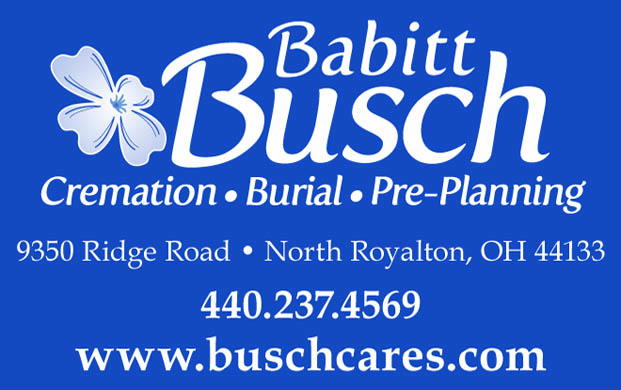Voters within the North Royalton City School District may see the return of a bond issue on the May 2 ballot.
In a special meeting held Jan. 4 at North Royalton High School, more than 200 people – including teachers, parents with and without children in the district, school employees, retirees and older adults, and civic leaders – gathered in the main cafeteria to hear district representatives share available options following the failed Nov. 8 bond issue that called for the construction of one centralized elementary school, and renovations to the middle school and high school including the construction of an addition on the high school.
In the upcoming days ahead, School Board members will first decide whether to place the Nov. 8, 2016 bond issue back on the May 2, 2017 ballot, and decide what to do if either the bond issue is not placed on the ballot or if the issue fails – what school officials are referring to as a “Plan B.”
A final decision to place the issue back on the May ballot will be made at 7a.m., Jan. 23, during a special meeting. Community feedback will continue to be garnered and reviewed.
Those gathered Jan. 4 heard opening remarks from Superintendent Greg Gurka, and presentations from Treasurer Biagio Sidoti and Assistant Superintendent Jim Presot, who outlined the proposed “Plan B” calling for items like middle school roof section repairs, asphalt/concrete repairs, bus purchases, high school rear parking lot repair, elementary roof coatings, security entrances at buildings and HVAC issues at the elementary and high school buildings, which are of main concern and first priority. “Plan B” improvements would be performed in increments over a seven-year time period and cost a total of $29,557,000 with $5,430,000 covered by existing permanent improvement funds. Remaining costs would come from general and operating funds.
“Today, there are few holes on our district’s financial belt that are left to be tightened unless we reduce educational programs and services,” Gurka said. “Our goal in coming up with the money needed to fund Plan B is to make reductions as far away from the classroom as possible. However, because we do not have much, if any fat, in our operation, that is going to be challenging.”
Possible proposed reductions include the elimination of high school busing and a required two-mile radius for the busing of K-8 students, elimination of middle school athletics, the elimination of Gifted Services, an increase in class size at all levels of education, the removal of German as a high school foreign language option, supply purchasing reductions, professional development limits, field trip reductions, increases in athletic and music pay-to-participate fees, and reductions in certified support staff, and administrative and district support staff positions like those in the central office, and transportation and maintenance departments.
“There is no way to be able to use current funds available to complete the $81 million in renovations that the Ohio Facilities Construction Commission has stated that are needed to renovate the existing structures nor is there a way to use existing dollars to fund a comprehensive plan to provide facilities that effectively meets the 21st century educational needs of all our students,” Gurka said at the Jan. 4 meeting. “What Plan B will do is address only those issues that we can no longer subject our students and staff to. First and foremost are the heating and cooling problems at our elementary schools and high school. It is unfathomable that we have students sitting in classrooms with extreme hot or cold temperatures that rob them of the ability to fully focus and concentrate on their learning. This must be addressed now. We cannot put it off any longer.”
To aid in their Jan. 23 decision-making process, officials held the Jan. 4 meeting to discuss issues facing the district and garner attendee feedback on addressing building repair needs.
Meeting attendees were given time to discuss at their individual cafeteria tables whether the Nov. 8, 2016 bond issue should be placed back on the May 2 ballot and share their thoughts on the proposed “Plan B.” Following the break-out session, meeting attendees elected one tablemate to share their overall opinions with the crowd gathered and school board members and officials seated in the front of the room.
“Plan B isn’t an option and it isn’t acceptable to the general public,” said one meeting attendee. “There seem to be some issues with public trust, and apparently the stadium made some issues with people. We suggest remarketing the need and seeking out opportunities to market in different ways such as holding coffees and getting closer to the public. At our table, some of us said we would consider moving out if this bond issue doesn’t pass.”
A retired gentleman shared his table’s thoughts.
“There should be some skin in the game from teachers,” he said. “You have to show people like me that you’re really trying for this. The older people in this community feel the same way I do. Older, retired people can’t sign on to something like this (Issue 116).”
Cost per household – the tax increase that would come along with the passage of the proposed bond issue – likely swayed district voters, many remarked, as North Royalton voters notoriously and historically vote down tax increases election after election.
The bond issue called for an increase of $18.08 per month for a $200,000 home valuation.
“I spend $20 a month at McDonald’s,” said one gentleman. “These buildings are in trouble. If you’re telling me you can’t afford 20 bucks a month, then you’re not doing something right.”
Passion exuded from many of the meeting attendees.
“I love this district,” said one woman who was brought to tears while sharing her tablemates’ feedback. “Those cuts would be devastating. It would hurt the kids. It would hurt their education. We have great teachers who aren’t going to want to stay here. If your community doesn’t care about you, then they (teachers) will want to move out of the district. I so believe in this school district and I just wish this passion could go through.”
The overwhelming response of the crowd was to return the issue to the upcoming May 2 ballot. Many stated that implementing “Plan B” would be comparable to placing a “Band-Aid on a bullet wound,” as many issues wouldn’t be addressed including mold removal, alarm systems, plumbing, flooring, furniture and lighting.
Ward 1 Councilman and North Royalton City Schools Technology Director John T. Nickell was also in attendance Jan. 4 and spoke on behalf of his tablemates.
“Yes, put it back on the table but not unless you have pain,” he said of placing the bond issue back on the ballot and communicating negative impacts of a failed vote. “This is the year of Trump and telling it like it is. Don’t sugarcoat. I’ve got bus drivers at my table and they know they’re going to feel the heat. Plan B is a waste.”
He went on to encourage school officials to use more straightforward, easy-to-understand wording with the public, such as eliminating the term “tuckpointing” from language presented in “Plan B.” Tuckpointing refers to repairing mortar joints in brick walls.
“What is it? Tuckpointing? I know what it is, but many people don’t. People don’t care about some of the technical stuff sometimes. They care about ‘what’s it going to do for me?’ and ‘What’s in it for my kid?’” Nickell said.
Many crowd attendees agreed that remarketing the campaign is necessary for passage.
Suggestions from tablemates included sending more targeted mailings, breaking down tax and property value verbiage, putting tax increase costs into real-life examples such as going out to eat twice a week, providing visible, tangible plans of what newly constructed buildings could look like, voicing more of the negatives that will come along with another failed bond issue, and further breaking down district financials, costs and real estate depreciation.
A realtor in attendance spoke on behalf of her table and stated how she’s routinely asked, “How are the schools?” when meeting with prospective city home buyers. She asked for further transparency, more community meetings, and better marketing.
“I’ll just say it, the marketing wasn’t good. It did not stress property values enough,” she said of the November campaign. “I did not like the campaign slogan of “The Need Is Real.” We need visuals and we need to see the kids talking about this. We have to really get the message out there.”
At the conclusion of the nearly three-hour meeting, School Board President Jacquelyn Arendt said the evening’s feedback would be reviewed and feedback will continue to be gathered. The School Board met Jan. 5 and 9.
By SARA MACHO HILL
Contributing Writer














